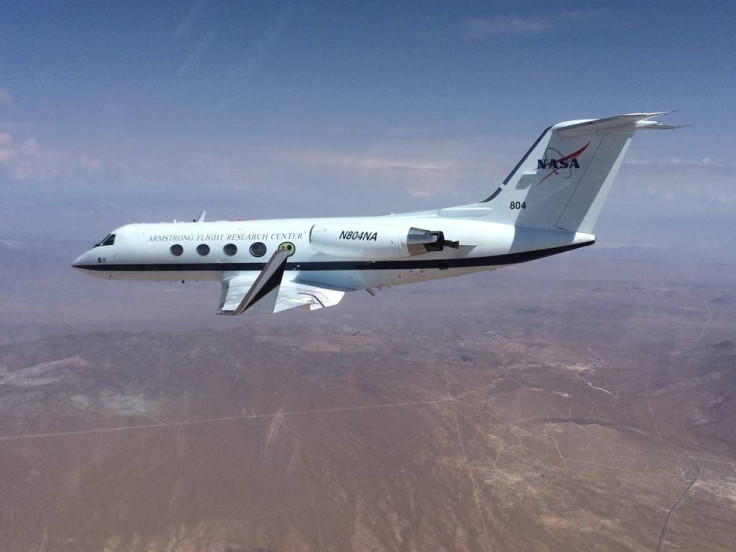NASA Successfully Tests New Shape-Changing Wing Technology For Next-Generation Aircraft

Researchers at NASA have successfully conducted initial flight tests of a new technology that will allow next-generation airplanes to change the shape of their wings, the space agency announced Wednesday. The new technology is expected to save millions of dollars annually in fuel costs.
As part of the new project, dubbed Adaptive Compliant Trailing Edge (ACTE), NASA researchers have worked with the Air Force Research Laboratory (AFRL) and FlexSys Inc of Ann Arbor, Michigan. Over the past six months, AFRL flew 22 research flights with the experimental wings, which according to researchers, can offer significant improvements over conventional flaps.
“Flight testing was key to proving the concept’s airworthiness. The test aircraft was flown with its experimental control surfaces at flap angles ranging from -2 degrees up to 30 degrees,” NASA said, in a statement.
In 2009, AFRL and NASA’s Environmentally Responsible Aviation (ERA) project loaded a Gulfstream III jet with ACTE flaps designed by FlexSys, and incorporated its proprietary technology, according to NASA.
The new technology, which can be installed on existing airplane wings or integrated into entirely new airframes, can help engineers reduce the wings’ structural weight, which in turn would allow the aircraft to consume less fuel than before. The shape-changing wings are also predicted to help decrease aircraft noise during takeoff and landing.
“The completion of this flight test campaign at Armstrong is a big step for NASA’s Environmentally Responsible Aviation Project,” Fay Collier, the ERA project manager, said in the statement. “This is the first of eight large-scale integrated technology demonstrations ERA is finishing up this year that are designed to reduce the impact of aviation on the environment.”
© Copyright IBTimes 2024. All rights reserved.






















